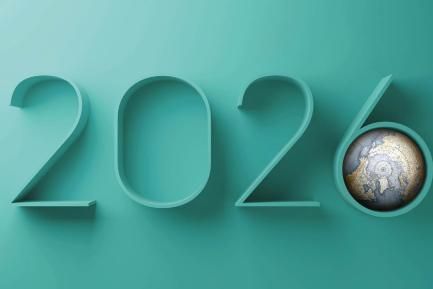
US inflation’s last mile
The easing of monetary policy is dependent on inflation continuing to fall towards the 2% target, a path which has been dubbed the «last mile». What factors will help the US economy to complete it?
One of the key elements of our new forecast scenario for the international and US economies is the prediction that the central banks will begin to cut interest rates in mid-2024. However, this easing of monetary policy is dependent on inflation continuing to fall towards the 2% target, and this path – which has been dubbed the «last mile» – is neither free from hurdles nor will it necessarily be fast. Focusing on the case of the US, what factors will help it to reach 2%?
US headline inflation stood at 3.1% in January (0.3 pps less than in December and 1.0 pp less than the 2023 average), while core inflation, which excludes energy and food, remained at 3.9% (4.8% in 2023). These figures are still somewhat higher than the Federal Reserve would like, but there are several indicators and nuances that suggest that the inflationary pressures are moderating more than this 3.1% would indicate.
To observe the most immediate inflationary pressures, it is helpful to look at so-called inflation momentum,1
as this indicates what the year-on-year inflation would be if the inflationary pressures of the last three months were to prevail for a 12-month period. Thus, as can be seen in the first chart, the momentum of core inflation has abandoned the levels above 5%, standing in January at 3.6%. At first glance, this figure is still high and suggests that the undesirable high inflation is persisting. However, the chart helps us to identify three phases of the inflationary process and, through this analysis, we can anticipate a good outlook for the coming months.
- 1The annualised change in the three-month average of the seasonally-adjusted CPI compared to the previous three months.

In a first phase of the cycle, between mid-2021 and early 2022, it was goods that drove up inflation, as a result of the bottlenecks in global distribution chains and the rise in energy and other commodity prices. These inflationary pressures have not only now dissipated, but the prices of goods are exerting deflationary pressure. In a second phase, during the middle two quarters of 2022, US inflation received a new boost through services, reflecting, above all, the buoyancy of the labour market, the pent-up savings accumulated during the previous months and changes in consumption patterns following the lifting of restrictions after the pandemic (see second chart). Since the start of 2023, however, this element has also ceased to be a source of concerning inflationary pressures, with a similar contribution to inflation momentum as it had prior to the pandemic.

Thus, since the end of 2022 we have found ourselves in a third phase in which the shelter component, which accounts for 35% of the consumer price index basket and measures rental prices (observed and equivalent for home owners), has become the main contributor to the high levels of inflation. Its momentum is currently 5.5% and its year-on-year inflation as high as 6.1%, to the surprise of most analysts. In addition, its contribution to core inflation momentum at the end of 2023 was 2.5 pps, while its average contribution between 2012 and 2019 was 1.3 pps. Therefore, if these values were to normalise, core inflation momentum would be 2.4%, much closer to the Fed’s target. As we explained in a previous article,2 the price of rents measured using alternative indicators to those of the Bureau of Labor Statistics (such as the Zillow Rent Index) is falling sharply, which sooner or later should translate into lower inflation rates in the shelter component. In fact, according to a report published by the Joint Center for Housing Studies of Harvard University, the tensions in the rent market are clearly moderating and this process looks set to continue in the coming months. The report points out that the price of new rents rose in Q4 by just 0.2% year-on-year, far from the +15.3% registered at the beginning of 2022, and that of the 150 rental markets which they monitor, only 8 registered year-on-year increases of more than 5% in that quarter (146 markets in Q1 2022, with 25 reporting increases in excess of 20%).3 All of this allows us to be optimistic about the outlook for the shelter component, and as Fed Chair Jerome Powell stated in January, there is no doubt that these de-escalation dynamics in the rental market will eventually filter through to the official inflation measures. The only question is when this
will happen and to what extent.4
- 2See «The importance of rents in US inflation» in the MR09/2023.
- 3See «America’s rental housing 2024», Joint Center for Housing Studies.
- 4We think that’s coming, and we know it’s coming. It’s just a question of when and, and how big it’ll be. Transcript of the press conference of the FOMC meeting of 30 and 31 January 2024.

However, there are several risks surrounding this expectation of a moderation in inflation. Firstly, while the contribution from services excluding shelter has normalised with respect to the tensions observed in mid-2022 (the second element we mentioned earlier), the latest figures published since November do not leave the Fed any room for complacency. Specifically, services, excluding shelter, have gone from averaging a momentum of 3% in Q3 2023 to one of 5.4% in January. Indeed, the price of services is more closely linked to wages than certain goods, so given the expectations that the labour market will remain robust in 2024, we should not assume that inflation’s path towards 2% will be plane sailing. Secondly, the current geopolitical landscape poses a significant source of risk, and while the economic implications of the ongoing conflicts are limited for now (not so for the humanitarian implications), both container shipping costs and commodity prices (e.g. oil, gas or other industrial materials) could be stressed in the event of any escalation, potentially driving up inflation once again. Thirdly, the strength of US domestic demand – driven not only by household consumption but also by the current fiscal deficits, which are likely to continue regardless of who wins the presidential election on 5 November – requires us to exercise caution in declaring the fight against inflation over.

In any case, while all these uncertainties exist, the disinflationary process has made significant progress in 2023 and should, in theory, continue in 2024 provided that the risks mentioned above do not materialise. In addition, it should be recalled that the Fed’s inflation target is not referenced to the CPI, but rather to the Personal Consumption Expenditures (PCE) index and its inflation was 2.4% year-on-year in January (0.7 pps less than the CPI, largely because of the lower relative weight of shelter in the PCE index, at less than 15%). Moreover, in December the momentum of the PCE index was already below 2%, and this is a metric which the Fed usually refers to as a good indicator of inflationary pressures. All this opens the door to the possibility of interest rate cuts. Just as in the case of shelter, it is not so much a question of whether the Fed will lower rates, but when and by how much.



